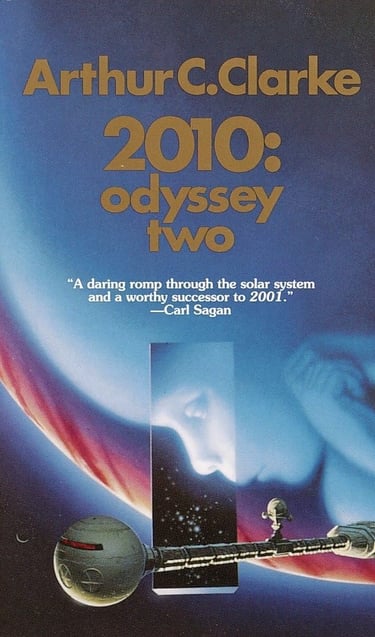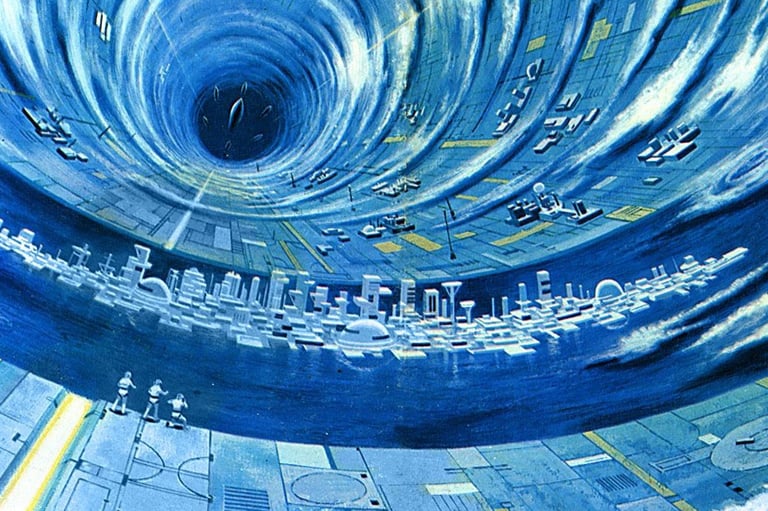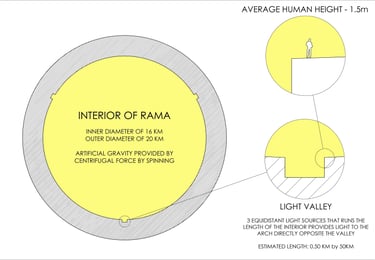Science Fiction Spaces: How Reading Sci-fi Became My Gateway to Architecture
Science fiction dreams up many different alien worlds, including alien architecture! Clarke's Rendezvous with Rama is one of the stories that really inspired me to take up architecture.
SPACE
Richard Lasam
2/25/20253 min read


I remember vividly the first science fiction novel I have ever read. I was around the age of 10 when I discovered in the library of my childhood home a pile of old (slightly musty) paperback books that my father owned when he was an avid reader in his younger days. Amid the piles of National Geographic magazines and neatly ordered encyclopedias was a book that stood out from the others: a blue book with a baby floating in space, a spaceship, and a rectangle in the middle. This was the book 2010: Odyssey Two by Arthur C. Clarke.
The book was not technically about architecture; it was about the further interactions of humanity with the alien technological artifacts known as Monoliths. But it became my gateway to other science fiction stories that were my companions during my teenage years.




And so I read all sorts of books that sent me to unusual and fantastic worlds, ranging from people living on an ocean planet to the impossible tree ships of Dan Simmon’s Hyperion Cantos. But none of these books captured my wonder of architecture until I read one of most celebrated works of science fiction that captures the wonder and uncertainty of meeting the unknown: Rendezvous with Rama by (again) Arthur C. Clarke.
This novel presents us with how humanity reacts when a visitor from beyond—in this case, the interstellar ship named Rama—visits Earth. The description written in the story encapsulates for me how the interior space of the spaceship can have such alien proportions that it is barely within the limits of what the human mind can accept. The spatial dimensions of the spaceship can be told here without spoiling the story: it is a cylindrical structure, 50 kilometers long and 20 kilometers in diameter. It has an internal hollow space with a radius of 8 kilometers.
It was my first encounter with the idea of a cylindrical world. Imagine living inside a tube, and the tube was the size of a world with a surface area more than 2,700 square kilometers, a size that can easily fit any major urban city on Earth.
Book cover of 2010: Odyssey Two; illustration of inside the spaceship in Rendezvous with Rama


A visual representation of the size of the interior of Rama I did for a college project.
It made me begin to see how architecture can tell the story of the people moving through the space. This applies in actual architecture works here on our planet, with architects weaving the story of how one will use and inhabit a space whenever a structure is designed. The wonder and majesty of these science fiction stories created in me a sense to design; and though I might not be able to apply the ideas from these sci-fi worlds to real life (no project will be the size of Rama in our lifetimes, sadly), I can still be inspired by these stories to influence my design sense—and you never know, what is fiction today may be reality tomorrow. After all, humanoid robots, A.I, spaceship to Mars… it’s pretty telling that the future is already here!
